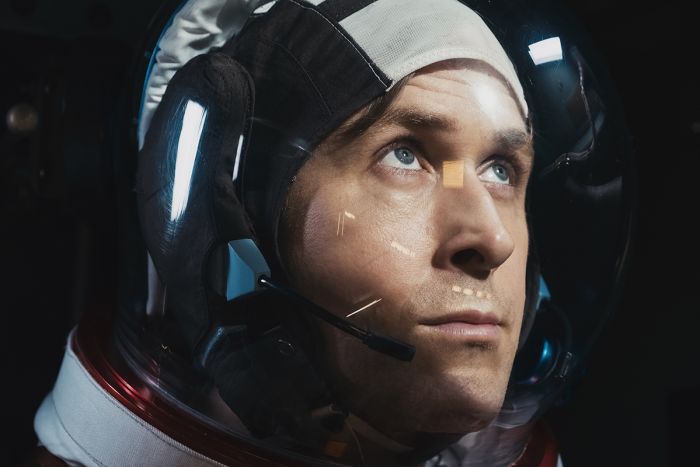Brace yourselves, awards season is coming. In the next few months, we will begin to see hordes of chilly historical biopics, gnashing at the bit for a nomination. While “First Man” is better than most of its kind, I found myself disappointed at how good it could have been.
Damien Chazelle directs this vision of famous astronaut and household name, Neil Armstrong. Two of his previous credits include “Whiplash” and “La La Land,” both Oscar favorites, the former of which I am a huge fan. His most recent film has garnered similar praise and will likely win a top award.
I really tried to love this film, but it is slow, and not in a good way. I am a fan of atmospheric, claustrophobic dramas, of which this desperately wanted to be. One of the main detractors is Neil Armstrong himself, played by Ryan Gosling.
Throughout the film, Armstrong is largely cold, distant and formal. After the death of his cancer-stricken daughter, Armstrong devotes himself to his work in the space program, which eventually leads to the Apollo 11 mission to the moon. The death of Armstrong’s daughter, and his relationship with his surviving family, is the dramatic core of the film. Unfortunately, these relationships felt surface level, merely acting as the standard “everyman” foil to his endeavor in space.
To frame the isolated and turbulent nature of Neil’s experience, Chazelle uses ultra close ups and excessive “shaky cam.” The close ups are extremely effective in scenes where characters are crammed into rockets, and the threat of obliteration and doom is near. However, in the domestic scenes, these close ups make it more difficult for the viewer to feel any connection between Armstrong and his family. While I assume this was Chazelle’s intent, the characters are so bare boned that it only alienates the viewer.
Regarding “shaky cam,” this technique works incredibly well in scenes such as the test docking of the model rocket for Apollo 11. Here, the equilibrium of Armstrong’s pod is upset, and he is sent spinning with incredible g-forces that he must stop before passing out and dying. This camera work becomes infuriating in removed, distant shots of Apollo 11 in launch. The visual effects for this scene are done wonderfully, but I was exhausted from the shaking, longing for a steady shot. At this point, my friend leaned over and whispered, “can he just get to the moon already.” I agreed.
As a character study, “First Man” is mechanical, familiar and uninspiring. The film hits its stride when it expands outside of Armstrong’s personal life. A great example is footage of protesters criticising the space program as extravagant and dangerous, due to the deaths of many of the astronauts.
One brief standout scene has a black man calling attention to rampant poverty and suffering in the city while there’s “whitey’s on the moon.” It should also be mentioned that the theremanin accompanied soundtrack is gorgeous, and the scenes on the lunar surface are unique—breathtakingly silent, with no ambient noise.
Most importantly, the film excels in its portrayal of space flight and the risks involved. Here, we are not treated to the familiar glossy and bright widescreen shots of rockets gliding past the stars. Instead, scenes of space travel are dark, cluttered and terrifyingly unpredictable. This film suffers with human drama, but beautifully portrays the spectacle of the moon landing and the hardships to accomplish this “one small step for man.”
Rating: 7/10



